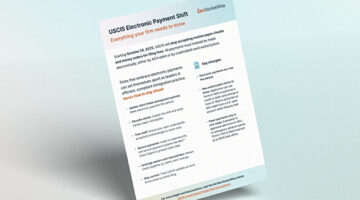Perhaps the single most underappreciated problem with the practice of law is the physical discomfort that comes from sitting for 10 to 12 hours each day.
If you’re like me, your problems begin within just a few hours of getting settled at your desk. As early as mid-morning, you start to experience a dull ache between your shoulder blades. By lunchtime, this ache has turned into a throbbing pain that is creeping up your mid-back and into your shoulders and neck. Next thing you know, it has engulfed your entire upper body, and by the time you’re ready to leave for the day, it has even spread to your lower extremities. After limping your way home, things have gotten so bad that you have no choice but to curl up in fetal position and have a good cry. Sound familiar?
If so, I have good and bad news for you. First, for the bad news: from an anatomical perspective, your pain is inevitable. Indeed, as it probably has become obvious to you, the human body is not meant to sit in a chair all day…

USCIS shift to electronic payments: What immigration firms need to know
As of October 2025, U.S. Citizenship and Immigration Services requires electronic payments for filing fees. Learn key updates, exemptions, and how firms can prepare.
The good news is that there are things you can do to help prevent — and maybe even reverse — some of the short- and long-term damage to your body. In order to understand why these measures might work, it’s helpful to understand what causes the pain in the first place:
Generally speaking, pain associated with sitting is the result of muscle shortening, muscle atrophy, and fascia binding. Stated simply, these conditions cause your pelvis to be thrown out of whack while the rest of your body morphs into one weak, stiff mass of tissue that is just barely capable of keeping itself upright. No wonder your body hurts!
In regard to muscle shortening, the position of sitting causes a number of important muscles to shorten and tighten, which results in long term alignment issues associated with chronic pain. These muscles include your hamstrings — the big muscles on the back of your legs — as well as your hip flexor muscles. Hip flexors are the muscles in your front body around your pelvis, and include, most significantly, the iliopsoas, a big muscle that wraps from the inside of the lower spine and the top of the pelvis all the way down to the upper part of the femur bones (the thigh bones).

3 Ways Lawyers Are Finding New Efficiencies With AI
Those who’ve adopted legal-specific systems are seeing big benefits.
Over time, shortening of the iliopsoas actually causes your pelvis to tilt forward. This tilting, in turn, puts increased pressure on the lower back and can even make it difficult to walk. To make matters worse, on the other side of the body, shortened hamstrings force the pelvis to tilt back in the other direction. Unfortunately, instead of balancing the pelvis out, this back and forth pulling only causes the iliopsoas muscles to tighten further in a kind of tug of war with the hamstrings. Needless to say, after many years of muscle shortening on both sides, your pelvis is completely screwed up, becoming locked into place in an awkward position that causes chronic lower back pain.
But that’s not all. In addition to the horrors of muscle shortening, your desk job may also be contributing to muscle atrophy and fascia binding. Muscle atrophy — especially around your core — makes it difficult to maintain healthy and proper alignment of the spine, causing intense mid- and upper-back pain.
Fascia binding is even scarier. It’s when your muscles actually start binding together from lack of use. Basically, because individual muscles aren’t being used, over time the muscle tissue forms into big, indistinguishable lumps of tissue. As you can imagine, this causes extreme stiffness and a limited range of motion. It also just sounds sort of scary, right?
Despite the significant anatomical obstacles to painless sitting, the good news is that with a little bit of effort you can help prevent and possibly reverse these conditions.
First, in regard to muscle shortening, there is a very simple and obvious solution: muscle stretching. Take a few minutes before, during, and after your workday to stretch your hamstrings and hip flexors. You can stretch your hamstrings by coming into a forward fold while keeping your knees bent as much as necessary to rest your belly on your thighs. If this is comfortable for you, then gently straighten your legs to increase the sensation. As for your hip flexors, a simple runners lunge — lunging into your front leg while dropping your back knee to the ground — will usually do the trick. For simple tutorials on how to stretch these muscles (and more), check out this slideshow from the Mayo Clinic.
Second, as for muscle atrophy and fascia binding, you probably know what you need to do: exercise! In particular, you might think about focusing on developing your core strength — including the muscles on your abdomen as well as your back — to help prevent collapse in the upper body while sitting.
In sum, even though the body was not designed to sit all day, by implementing targeted measures you can avoid some of the worst damage caused by long hours at your desk. This, in turn, will make your law job that much less painful.
Elizabeth Adams (not her real name) is a recent law school graduate, former federal judicial clerk, and aspiring health guru. She currently practices insurance coverage litigation at a mid-sized law firm. When she isn’t sitting at a desk — which isn’t very often — she is following her bliss. At the moment, this mainly involves working toward becoming a certified yoga teacher. Elizabeth’s column focuses on exploring how and whether lawyers can achieve a sustainable work-life balance. She can be reached at [email protected].